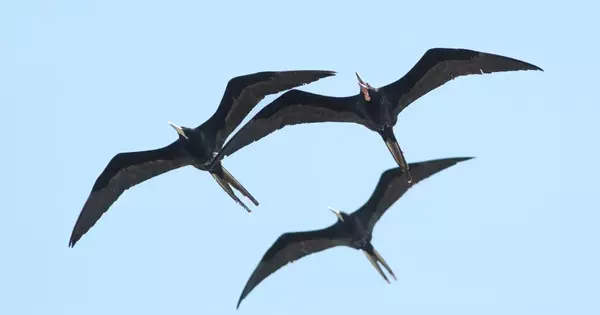Most bird species use bird flight as their primary mode of locomotion, in which they take off and fly. Birds use flight to help them feed, breed, avoid predators, and migrate. Bird flight is one of the most complex forms of animal locomotion. Hovering, taking off, and landing are all examples of complex movements involved in this type of motion. As different bird species evolved over millions of years to adapt to specific environments, prey, predators, and other needs, they developed specializations in their wings and learned to fly in different ways.
A new study led by Swansea University has demonstrated how bird flight can provide meteorological information about fine-scale environmental conditions. While all flying animals must respond to atmospheric turbulence, little is known about how they do so, with traditional methods of measuring it in nature being logistically difficult and expensive.
Swansea University researchers worked with researchers from the University of Leeds, the Max Planck Institute of Animal Behavior, and the University of Konstanz on a novel approach that involved flying a small plane alongside and close to the path of pigeons as they returned to their loft, measuring the turbulence levels on the study site during each journey.
What was most intriguing was that pigeons could fly in conditions too turbulent for ultralights, but there was also evidence that birds avoided certain routes with extremely high turbulence. This begs the question of how birds deal with high turbulence and how it affects their flight costs.
Professor Emily L. C. Shepard
The team used GPS, barometric pressure, and acceleration data loggers attached to the birds to see if fine scale changes in flight altitude and motion could be used as proxies for turbulence strength, comparing this to turbulence measured by the aircraft’s anemometer.
The findings, which were published in the Journal of the Royal Society Interface, show that the birds’ unsteadiness as they bump up and down can be used to determine how turbulent the conditions are.
This new study enables the use of bird-borne sensors to calculate freestream turbulence in nature, which would be extremely useful in inaccessible areas and conditions, similar to how seal-borne sensors are used to measure salinity and sea temperature beneath ice caps.

Lead-researcher Dr. Emmanouil Lempidakis, who conducted this research as part of his Ph.D., said: “Although the birds choose when and where to fly, this method can provide us with an understanding of fine-scale environmental conditions without the cost of other approaches, and enables to look at turbulence from a different perspective.”
The team is already considering how to apply this newly acquired knowledge to investigate how turbulence may influence the flight effort and route selection of these birds.
For most people, the ability to fly distinguishes birds from the rest of the animals on the planet. Birds, along with insects and bats, are one of three groups of animals that have evolved to take advantage of the three-dimensional space of the Earth’s atmosphere. Birds, however, are arguably the most impressive flyers of these three groups due to the speeds they can achieve and the distances they can travel.
Professor Emily L. C. Shepard, an expert in wild animal movement ecology, explained: “What was most intriguing was that pigeons could fly in conditions too turbulent for ultralights, but there was also evidence that birds avoided certain routes with extremely high turbulence. This begs the question of how birds deal with high turbulence and how it affects their flight costs.”
















